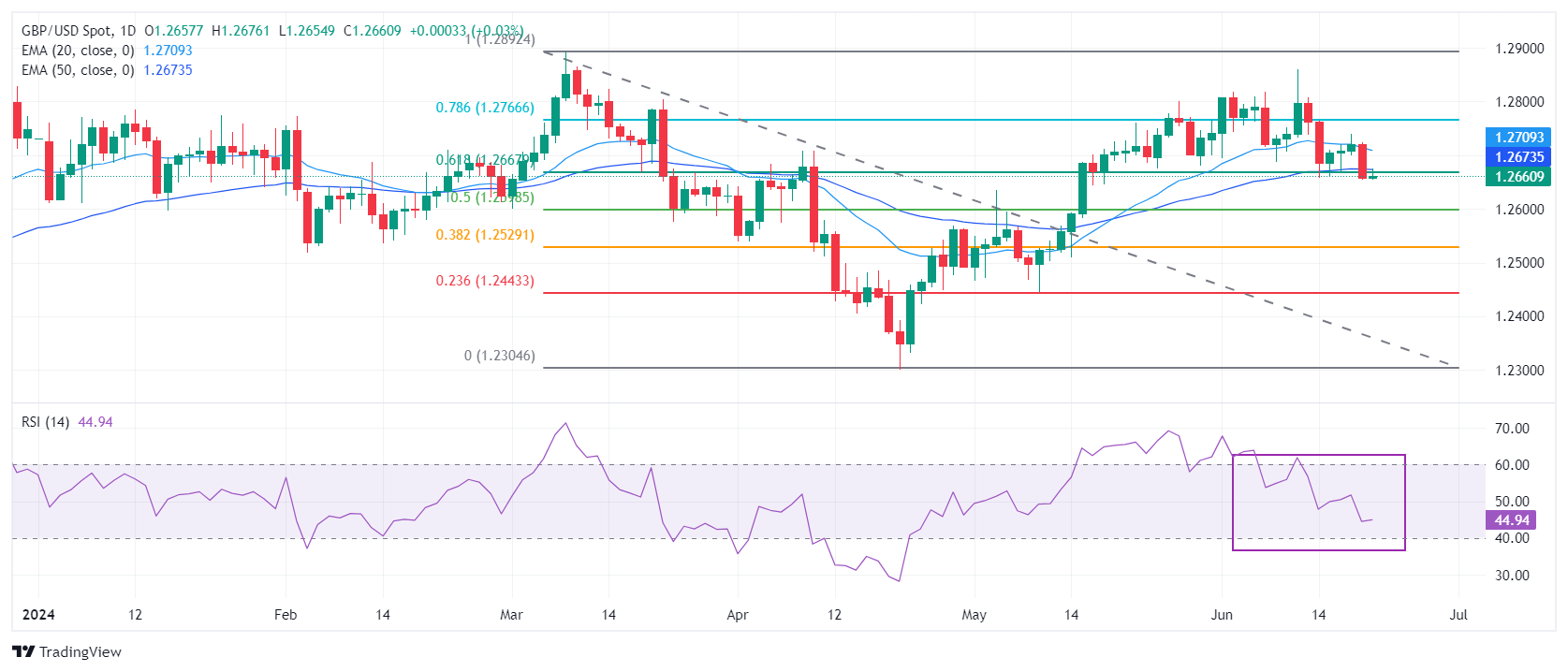Pound Sterling rises on robust UK Retail Sales


- The Pound Sterling strengthens after UK Retail Sales grew more than expected in May.
- Strong UK Retail Sales could weigh on BoE rate-cut hopes for August.
- Investors will keenly focus on the preliminary PMIs for June for both the UK and the US.
The Pound Sterling (GBP) edges higher in Friday’s London session as the United Kingdom (UK) Office for National Statistics (ONS) has reported stronger-than-expected Retail Sales data for May. The report showed that monthly Retail Sales rebounded, growing at a robust 2.9%, more than the 1.5% expected. On year, Retail Sales surprisingly rose by 1.3% while investors expected them to have declined by 0.9%.
Retail Sales are an indicator measuring consumer spending, which accounts for a major part of economic growth. A significant improvement in sales at retail stores despite the Bank of England's (BoE) maintaining higher interest rates indicates strong demand but also increasing price pressures in the pipeline. This, if sustained, could be a headache for the BoE, which is focusing on achieving price stability.
On Thursday, the BoE kept interest rates steady at 5.25% in a 7-2 vote split, as expected. BoE policymakers acknowledged the return of headline inflation to the bank’s target of 2% in three years but said that won’t be enough as price pressures in the service sector are still too high. Currently, financial markets expect that the BoE will start reducing interest rates in August, which means there will be no rate cuts before parliamentary elections. Pre-election polls show the Conservative Party of Prime Minister Rishi Sunak is behind the opposition Labour Party by around 20 points, Reuters reports.
Going forward, investors will focus on the preliminary UK's S&P Global/CIPS PMI data for June, which will be published at 08:30 GMT. The PMI report is expected to show that the Composite PMI barely rises.
Daily digest market movers: Pound Sterling edges higher against US Dollar
- The Pound Sterling rises to 1.2670 against the US Dollar (USD) in Friday’s London session. The GBP/USD pair rises due to strong UK Retail Sales data and a modest correction in the US Dollar. The US Dollar drops as a recent decline in the United States (US) inflation and Retail Sales data for May has led to rising bets that the Federal Reserve (Fed) will start reducing interest rates in September.
- According to the CME FedWatch tool, 30-day Fed Fund Futures pricing data shows a 64% chance for rate cuts in September. The CME FedWatch tool also shows that there will be two rate cuts this year against one signaled by policymakers in their latest projections.
- Contrary to market expectations, Fed policymakers continue to argue in favor of one rate cut this year. Officials say they want to see inflation declining for months before lowering interest rates.
- In Friday’s session, the US Dollar will dance to the tunes of the US S&P Global PMIs data for June, which will be published at 13:45 GMT. The Composite PMI is expected to decline, although remaining above the 50 mark that separates expansion from contraction, due to slowing growth in manufacturing and the service sector. As the PMI data gives clues about the economic health and overall demand, a weak number would indicate that the economy is off from boil, boosting Fed rate cuts bets for September.
Technical Analysis: Pound Sterling remains below 20-day and 50-day EMAs

The Pound Sterling finds a temporary cushion near 1.2670 after the release of the upbeat UK Retail Sales data for May. However, the near-term appeal is uncertain as the GBP/USD pair is below the 20-day and 50-day Exponential Moving Averages (EMAs), which trade around 1.2700 and 1.2670, respectively.
The Cable struggles to hold the 61.8% Fibonacci retracement support at 1.2667, plotted from the March 8 high of 1.2900 to the April 22 low at 1.2300.
The 14-period Relative Strength Index (RSI) falls back into the 40.00-60.00 range, indicating that the upside momentum has faded.





